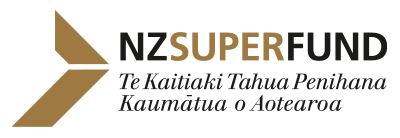Share:
The NZ Super Fund and Copenhagen Infrastructure Partners (CIP) have welcomed the Government’s Budget 2022 commitment to develop a regulatory regime for offshore renewable energy.
The two entities are partnering on a feasibility work toward an initially planned 1GW development off the South Taranaki Bight, representing more than 11 per cent of New Zealand’s current operational electricity generation capacity.
Budget 2022 includes an allocation of $18 million over three years to support the transition to a low carbon economy through the development of a regulatory framework for offshore renewable energy, an energy strategy and a roadmap for the development and use of hydrogen.
NZ Super Fund CEO Matt Whineray says Government’s budget commitment, announced as part of the first Emissions Reduction Plan released last week is a major boost for the project partners.
“A workable regulatory framework is important for providing investors with certainty as we look to allocate capital at various stages of the project. It gives us an extra level of assurance as we work our way through the project feasibility evaluation process.
“CIP has extensive wind energy experience from the approximately 30GW of offshore capacity it has in development and construction around the world. A key enabler of that work is a supportive regulatory framework that allows considered and sustainable use of the marine environment.
“The development of a regulatory framework for offshore wind in New Zealand is a critical step for a project that will help the country take a significant stride towards meeting its clean energy ambitions.
“We’re already engaging with government officials about regulatory issues and we look forward to that process now gaining further momentum.”
Whineray says offshore wind energy has the potential to be an attractive commercial opportunity for the NZ Super Fund, and one that aligns with its climate change investment strategy, as well as supporting Government’s 100 percent renewable energy commitment and its target of net-zero emissions by 2050.
NZ Super Fund and CIP say work is progressing on assessing the suitability of an offshore target area for generating energy from wind.
“Subject to approvals and engagement, later this year we will look to deploy environmental measurement equipment that will supplement work already done to assess the suitability of the area for generation. More details on that will be released in due course,” says Whineray.
“We look forward to working with Government, iwi, local authorities and interested parties such as recreational and commercial fishers, shipping, business and environmental organisations on our plans to support New Zealand’s energy transition.”
www.taranakioffshorewind.co.nz
